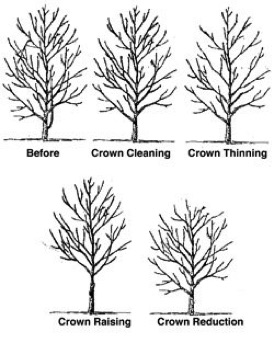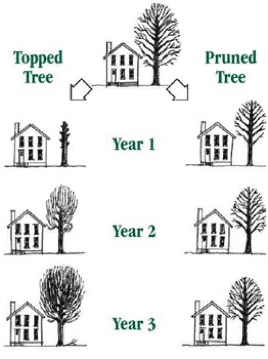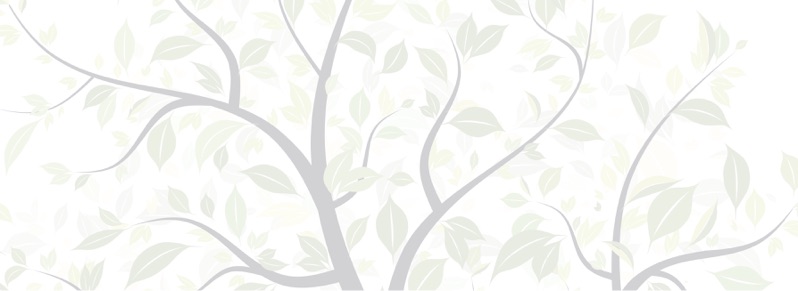TreeTerminology
PruningTechniques
Specific types of pruning may be necessary to maintain a mature tree in a healthy, safe, and attractive condition.
Cleaning is the removal of dead, dying, diseased, crowded and weakly attached branches from the crown of a tree.
Thinning is the selective removal of branches to increase light penetration and air movement through the crown. Thinning opens the foliage of a tree, reduces weight on heavy limbs, and helps retain the tree’s natural shape.
Raising removes the lower branches from a tree in order to provide clearance for buildings, vehicles and pedestrians etc.
Reduction reduces the size of a tree. Reducing the height or spread of a tree is best accomplished by pruning back the leaders and branch terminals to lateral branches that are large enough to assume the terminal roles (at least one-third the diameter of the cut stem). Compared to topping, reduction helps maintain the form and structural integrity of the tree.

Don'tTopTrees
The diagram on the right is comparing badly topped trees to correctly pruned trees.
A lot of tree pruning gets done during the winter months since it is easier to get the job done when the leaves are out of the way. Just be sure that you remove the branches correctly - you don't want to top your tree. Here's why:
The wounds created by topping do not heal and eventually decay enters the tree.
A topped branch will either die, or produce multiple sprouts which quickly grow back thicker and weaker than the original branches.
When a large portion of the crown is removed a like portion of the roots will die.
Topped trees eventually become hazardous.
Eventually more money will need to be spent either to re-prune the tree that has again become too large, or to remove it.
It’s ugly.






